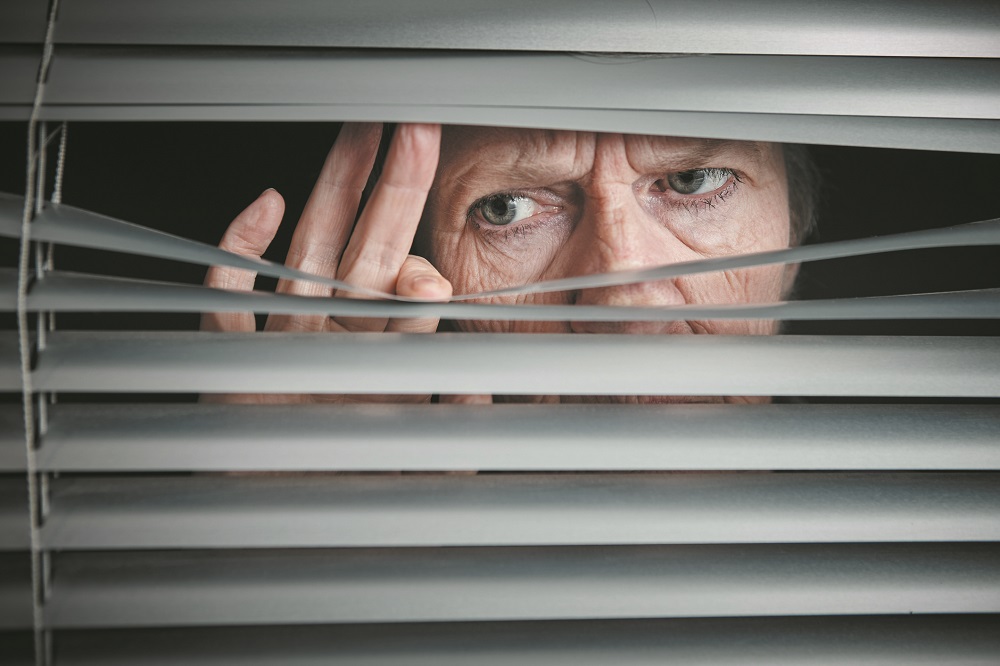If you’re like most people, there’s probably at least one thing that gives you the heebie-jeebies. Maybe it’s snakes or heights or needles or clowns. And you may wonder if your fear is ordinary…or does it rise to the level of a phobia? Michael Tompkins, PhD, codirector of the San Francisco Bay Area Center for Cognitive Therapy, explains how to distinguish a phobia from an everyday fear and what to do if, in fact, you do suffer from a phobia.
Defining phobias
Psychologists consider phobias to be anxiety disorders. When someone fears one object or setting, they call it a specific phobia. Specific phobias differ from ordinary fears if they meet three essential criteria…
Excessive distress. If you cringe when you encounter a spider on your bathroom floor and call your partner to come dispatch it, you probably don’t suffer from arachnophobia. People with arachnophobia would struggle just to finish reading this paragraph…or they might be unable to ever bring themselves to touch a book that contains photos of spiders.
Disproportionate emotional response. People with a specific phobia won’t quietly suffer when confronted with the object that causes their terror. Example: Imagine two people on the ground floor of a skyscraper—one with a fear of elevators and the other with a diagnosed specific phobia of elevators. The person who is fearful of elevators will uneasily step into the elevator and ride up to the 25th floor, perhaps while clenching his/her teeth and sweating. But if the person with the specific phobia is somehow forced onto the elevator, he/she would grow wild with panic.
Disruption of day-to-day life. Specific phobias cause people to change their behaviors. In recent years, the popular press has bandied about the term nomophobia—fear of being out of cell-phone range. If you asked 100 people whether they feel anxious when they have no bars on their phones or are physically separated from their devices, plenty would answer “yes.” But compare that with someone who won’t travel abroad until his/her partner produces coverage maps proving that they’ll always have full bars on their phones…or a student who fails his SATs because he had to leave his cell phone at the classroom door and couldn’t focus on the questions. Those are examples of how true phobias disrupt everyday life.
How phobias form
Phobias don’t materialize spontaneously—they’re learned, and there are three main ways this happens…
Traumatic conditioning. Someone who has been viciously attacked by a dog could develop a phobia of all dogs (cynophobia). In the instant of the attack, at the height of his fear response, his psyche learned the lesson, “Dogs are dangerous.”
Vicarious learning. A similar thing can happen by watching someone else experience trauma. Being in the presence of someone getting mauled by a dog could trigger the same kind of phobia as undergoing the attack yourself, provided that you were in a heightened fear state as you watched what happened.
Social learning. Someone raised in a household where one or both parents had an intense fear of dogs could develop cynophobia by hearing stories about how dangerous dogs are.
Risk factors and protective factors. Of course, not everyone who gets attacked by a dog…or sees someone else get attacked by a dog…or is raised by dog-fearing parents is going to develop cynophobia. Our genetics, experiences and environments can tip the scale toward or away from the development of a phobia. Example: A person who has always had dogs as pets has decades of “safe learning” from which he has established that dogs are generally harmless. If he is then attacked, this safe learning can act as a buffer against developing a phobia.
Uncommon phobias
The list of possible phobias is infinite—you can develop a phobia around just about anything, and the phobic object need not be inherently dangerous. Example: The actor Billy Bob Thornton has confessed to having a phobia of antique furniture. But there are certain objects or situations that humans are genetically predisposed to be afraid of. We call these primed fears because it has been advantageous, from an evolutionary perspective, to fear certain things. Prehistoric humans who lacked a healthy fear of heights might wander too close to a cliff’s edge and die before passing on their genes…the same goes for those who weren’t wary around snakes or enclosed places.
But that doesn’t mean every modern human is walking around with acrophobia (fear of heights), ophidiophobia (snakes) or claustrophobia (enclosed places), although it probably does explain why such rational fears so commonly develop into specific phobias. Specific phobias fall into three main groups…
Animal-object phobias: Birds (ornithophobia)…cats (ailurophobia)…trains (siderodromophobia)…men (androphobia)…water (hydrophobia).
Situational-environmental phobias: Darkness (nyctophobia)…being watched or looked at (sociophobia)…the color yellow (xanthophobia)…bathing (ablutophobia).
Blood-injection-injury phobias: Needles (trypanophobia)…having the eyes touched (ommetaphobia)…blood (hemophobia)…surgery (tomophobia).
If you have a phobia
Most people simply arrange their lives to avoid phobic objects. But some phobias—especially the blood-injection-injury type—can be dangerously disruptive. Someone who avoids health care because of a phobia is in a very precarious position.
Good news: Most phobias are extremely treatable and typically with just a few hours of work. All that’s required is a skilled therapist and a motivated patient. The best method—exposure therapy—is really the only thing that works. The therapist will design a series of engineered experiences in which the patient repeatedly learns, step by step, that the fear of the phobic object is misplaced. Example: Someone with arachnophobia may start by simply thinking about a spider or reading a script about encountering one. Perhaps she will be asked to view a photograph of a spider. Next, she will touch the photograph…then look at a closed container with a spider inside…then touch the closed container. In that escalating fashion, as the patient is ready, the therapist will guide her toward remission of the phobia.
To find a therapist skilled in treating phobias: Visit the website of the Association for Behavioral and Cognitive Therapies at ABCT.org.


